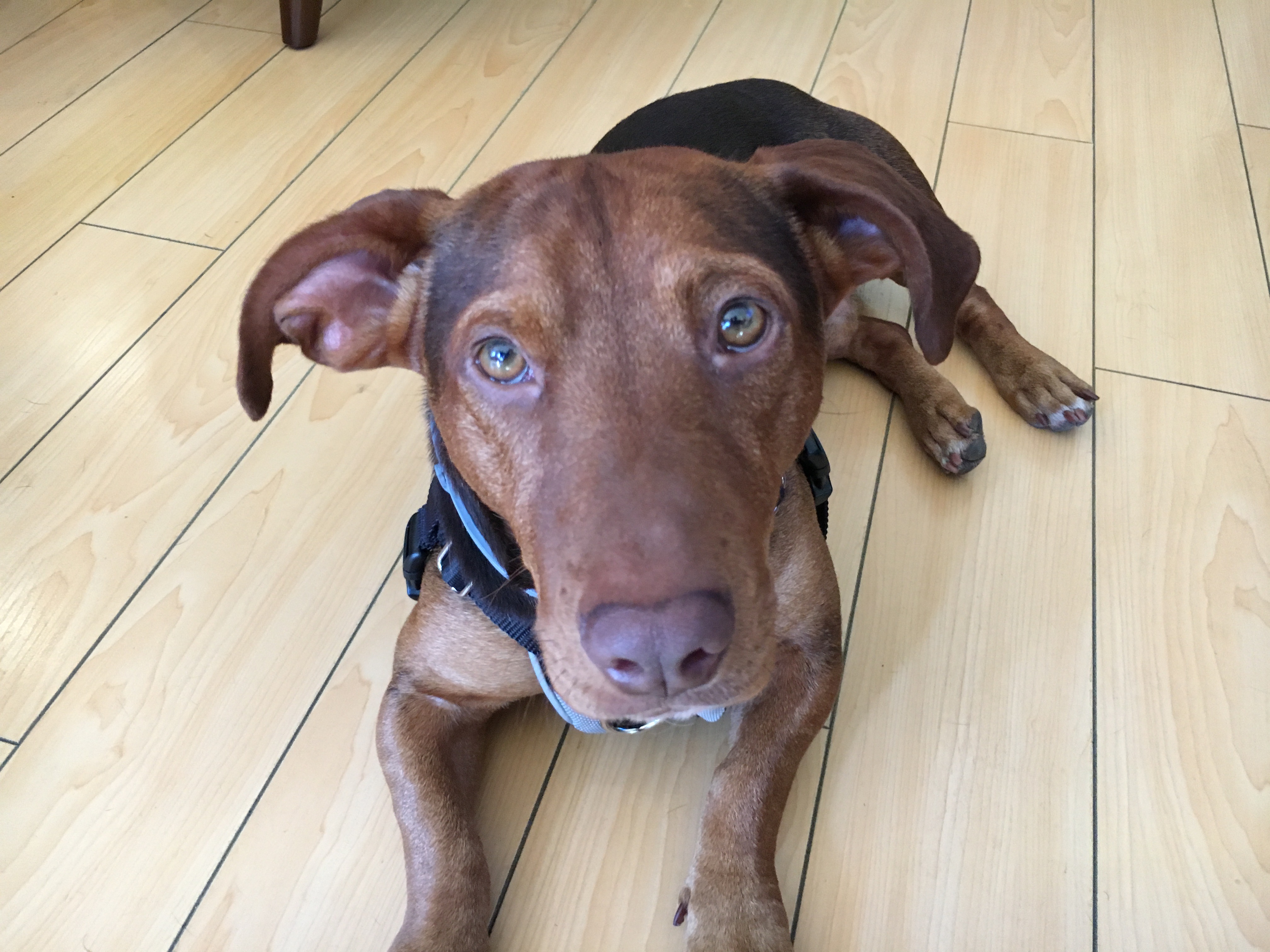Teaching a Bassett mix to Stop Barking at Tall White Males
By: David Codr
Published Date: August 30, 2018
For this Santa Monica dog training session, we helped 1 year-old Bassett Pitbull mix Bill stop barking and lunging at tall white men he doesn’t know.
Knowing that Bill barks and lunges at strangers who visit his home, I called ahead to give his guardian some instructions; primarily do not disagree or try to calm him down if he reacted during the greeting.
For dogs, any attention can be seen as validating. They also learn through association and repetition. I mention these things because correcting a dog when it’s barking can be interpreted as rewarding or agreeing with the a dog. Additionally, I have seen many people inadvertently create a command word to get upset by repeating the same mantra over and over again while a dog is reacting. Often people say “it’s OK good boy” or something similar over and over again to calm a dog down but inadvertently create a command word to do the exact thing they want to stop.
I reached into my dog behaviorist bag of tricks to help Bill stop barking to disagree with my arrival. I used a lot of positive reinforcers, I stopped attempting to pet him each time that he communicated he was uncomfortable, gave him space and waited for him to come to me. This approach works for all dogs and is not exclusive to Bassett mix dog training.
Many people go out of their way to try to become friends with a dog by petting it when visiting a friend’s house. But if a dog is reacting and you pet it, you’re going to reinforce the exact thing you want to stop. Additionally it often causes the dog to grow more concerned or worry of you. A better course of action is to give the dog time and space and wait for it to approach you on its own.
I spent the first part of the session going over a number of common mistakes that dog guardians make that inadvertently contribute to the dogs behavior. I’m pretty sure that Bill is reacting the way he is because he feels that he is in charge or at least is in charge of protecting his humans.
One tip I suggested was to have one of the guardians film Bill when out on a walk or in a situation where he may act out. As he was only adopted a month ago, they are still learning how to read his body language. Filming a few encounters can allow the humans to observe his behavior without the pressure of being there. Taking note of his tail movement, ear position, how he carries his body, etc allows them to know that Bill is getting tense or upset. This will allow them to get him out of trouble or redirect his attention away from something before he actually reacts.
The guardians had seen one of the focus exercise videos I posted on our website which is awesome. I had them run through it in person to give them a few additional pointers. If they practice up to 15 seconds on the second movement, first inside, then outside then on walks without any people he reacts to around, they will be able to use it effectively in the future.
I showed the humans a number of ways that they can flip the leader follower dynamic which will be crucial in order for Bill to stop barking at lunging at unknown white males. Right now, he thinks that his job is to protect his humans. Consistently enforcing rules and boundaries will go a long ways towards stopping that unwanted dog behavior.
Next I went over the importance of rewarding desired actions from Bill as well as ways to redirect him into those actions to earn his guardian’s attention or affection. I refer to these two techniques as Passive training and Petting with a purpose.
I also shared the four escalating consequences that I use to disagree with unwanted actions and behaviors. Although I would prefer the guardians use the technique that I described in the video below, there may be times where they need to intercede and let Bill know that they disagree with his actions.
To stop a dog from barking or lunging at tall white man, or anything for that matter, I often use a technique called counterconditioning. You can watch me use counterconditioning to stop Bill from acting aggressively to people who move around his apartment in the following free dog behavior training video.
Unfortunately, I got a phone call that cut off the video before I had a chance to wrap it up. But as you saw when watching it, Bill did not react when the positive reinforcer was being delivered.
I’d like the guardians to arrange to have a minimum of two tall white males come to visit each week for the next few weeks so they can practice these techniques. Bill has had a lot of practice at reacting to tall Caucasian males so it’s going to require a little bit of practice to help him develop a new, more positive approach.
The good news is, based on how quickly he responded to counterconditioning in the above training video, I don’t see a reason why his guardians can’t help him stop this behavior for good. It’s simply going to come down to them practicing positive interactions enough for him to develop new neural pathways.
Ii shared several additional tips for this counter conditioning approach in the roadmap to success video that we shot of end of this in-home dog training session.
Categorized in: Dog Behavior


